This black and white sketch features the various zones of the then about-to-be Chiang Mai University, featured in a book dating back nearly six decades titled, ‘News of the Founding of the Chiang Mai University’. Colloquially known as the Mor Choeng Doi, or Uni at the Foothills, this is the story of how the university’s acclaimed campus came about.
Wherever one stands on the main campus of Chiang Mai University, there will be a view of the mountains. Whether it is at a gentle incline or a sheerer mountain face, the university campus is a complex of hills, valleys, streams and reservoirs, natural and man-made, all to encompass the hilly terrain that the university covers. There are in total five natural streams which run through the university; Huay Kaew, Huay Ku Khao, Huay Mae Ra Ngog, Huay Tad Chompoo and Huay Fai Hin. It is this rich and natural environment which led the founders of the university to choose this location.
Water from Huay Kaew and Huay Ku Khao collected at Chiang Mai University’s Ang Kaew Reservoir
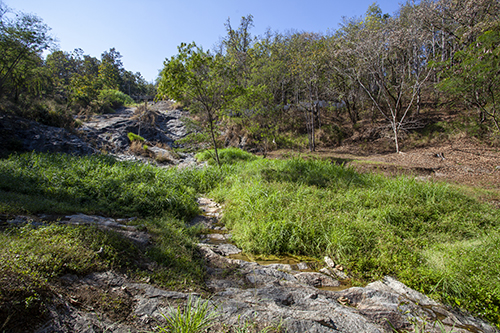
Huay Mae Ra Ngog area near the Faculty of Mass Communications which only flows during the
rainy season
“The location of a university is of utmost importance,” wrote Jarun Mahawat, Vice President of the Founding Committee in his memoirs. He went on to write about the key reasons why this location was chosen, firstly that it was conveniently located under eight kilometres from the city centre, it had a hilly topography which complemented its location in mountainous Chiang Mai, and there was enough land to purchase for the needs of the university. According to Paul W. Seagers, an expert in university planning from Indiana University, a university should sit on no less than 400 rai of land. It also needs to have its own natural water resource, which Chiang Mai University receives in large part from Huay Kaew stream and which it keeps in Ang Kaew Reservoir on campus.
M. L. Pin Malakul, President of the Founding Committee Chiang Mai University, explaining the campus map to Prime Minister Field Marshall Thanom Kittikachon
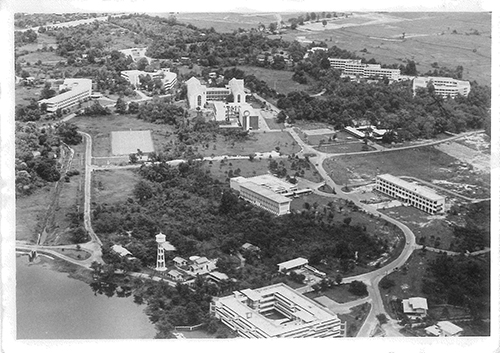
Area of Chiang Mai University in the past
Once the location was agreed upon, the committee began to acquire land, firstly in 1961 when it purchased four parcels of land totalling 579 rai and 68 wah. The first parcel belonged to Kee and Kim Ho Nimmana Haeminda, members of a wealthy family in Chiang Mai. The couple sold the land at cost to the university and according to Jarun Mahawat who was the contact person for the purchase in his 20 year anniversary of the university book;
“The president tasked me with contacting the owners of the land and I asked to meet Kee and Kim Ho Nimmana Haeminda, the owner of the first parcel. I said, “Mam, the government has agreed to a university and the committee wishes its location to be at the foothills of Doi Suthep where your land stands. Minister M.L. Pin Malakul sent me to discuss with you.” The minute I finished my sentence she said without hesitation, “Sir, go tell him that I am only charging at cost and whatever is left over I will give to you…what was left over turned out to be around 112 rai.”
Today, the land that was once the family’s orchard is the football field, the administrative building and environs.
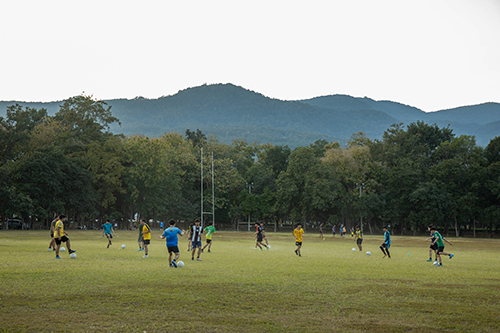
Football field
The second parcel of land, 172 rai, belonged to Boonyu Bosawat, owner of Boonyu Market. Originally used to farm cotton, the land is now where the Geology Department, the Faculties of Social Sciences and Humanities and Ang Kaew dormitories stand. The third parcel was donated by many members of the public and amount to around 243 rai, while the last parcel was taken from the Forest Reserves as they were areas flanking streams or waterfalls, amounting to 579 rai and 68 wah.

Faculty of Humanities in the past
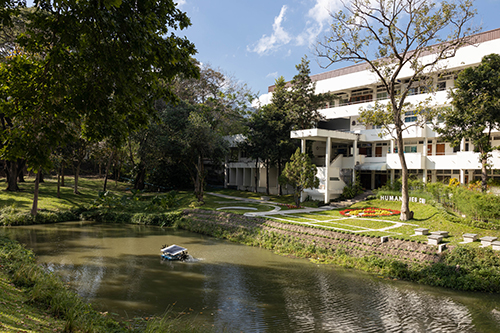
Faculty of Humanities in the present
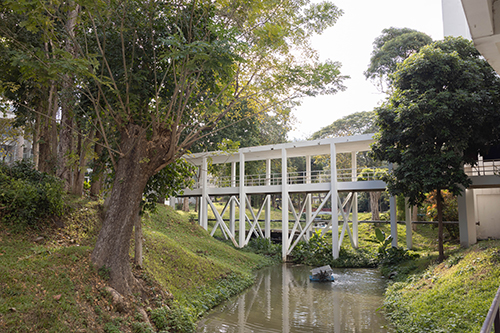
An area in the Faculty of Humanities with walk ways and waterways, landscaped with buildings
In 1962 Kee and Kim Ho Nimmana Haeminda donated land twice more to the university, once in May and again in October. In the following year, and again in 1968 there was major land expropriation by the university, with two families releasing the most land – the Nimmana Haeminda and Keeratipal families. The largest piece came from the Nimmana Haeminda family and in the name of its family members Jamjit Laohawat, Wichai Laohawat, Kee Nimmana Haeminda and Oun Chutima, totalling 185 rai of land.
Kim Ho Nimmana Haeminda
The Keeratipal family had 78 rai of land expropriated, including the colonial era two story house belonging to Arthur Lionel Queripel, built in 1926. Queripel worked for the Bombay Burma Company and the house was called Ban Ling Ha. Today this house has been incorporated into the CMU Lanna House Museum under the watchful eye of the Centre of Promotion of Arts and Culture, Chiang Mai University.
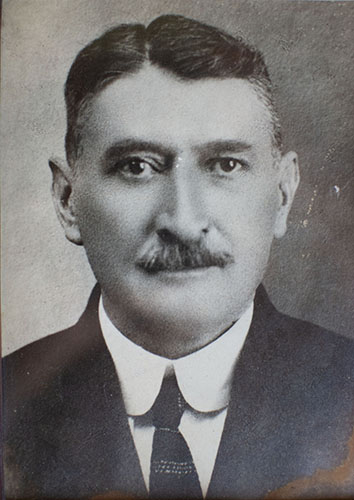
Arthur Lionel Queripel, owner of Ban Ling Ha

Ban Ling Ha
Another reason why the foothills were chosen for the university’s location was because of its proximity to the Faculty of Medicine, Nakorn Hospital Chiang Mai. At the time the Medical University had already been founded, with the Nakorn Chiang Mai Hospital, which sat on 30 rai of land, having been founded in 1939. Later, in 1946, MD. Yong Chutima had donated multiple pieces of land on which to build the hospital and the medical school. Kim Ho Nimmana Haeminda had also sold 116 rai of land to the hospital, when combined with land from four other families, the area became large enough to house both hospital and school. It wasn’t until 1965 when the school was folded into Chiang Mai University as a faculty, following the founding of the university the year previously.
Boonsom Martin Faculty of Medicine, Chiang Mai University, 1970 (photograph by Boonserm Satrabhaya)
As can be seen from the first sketch from 1964, there have been great changes over the years, turning a once wild and peaceful foothill into a vibrant university community, complete with modern facilities, dormitories for tens of thousands and leisure area enough for the city to enjoy. With a total area of over 8,502 rai, the university is separated into three main areas – the teak farm which used to run along the actual foothills of the mountain and is today the location for numerous faculties and dormitories; Suan Dok area (bisected by Nimmanhaemin Road) which is where all science and health subjects are housed; and Mae Hia Campus where the Faculties of Veterinary Medicine and Agro-industry are located. Apart from that there are also various research stations and training centres scattered around.
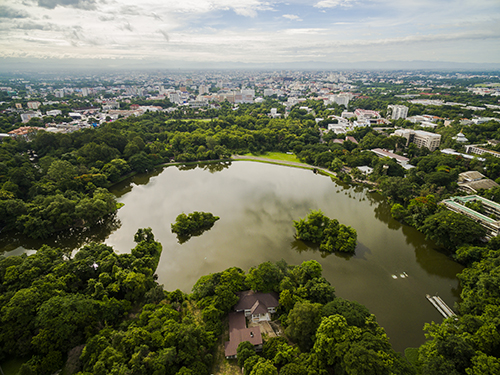
While Chiang Mai University today would likely be unrecognisable from that of the vision of the founding committee, it still contains the charming hilly topography, the five ancient streams, and the wonderful landscape which makes for one of the loveliest campuses in Thailand.